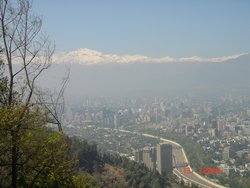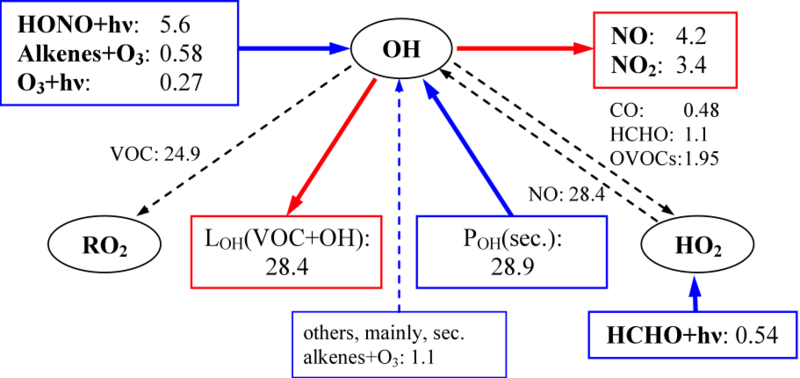Model calculations
Processes in the atmosphere are often so complex that they can not be directly described by simple parameterization obtained in laboratory tests. The ozone formation in summer smog is an example. If this phenomenon is to be predicted, interactions of a large number of chemical, physical and meteorological processes have to be taken into account. Computer simulations are an important tool for this and can provide information for environmental policy decisions.

Study in Santiago de Chile
In model calculations one differentiates between so-called "box models" and "transport models" (1D, 3D), in order to deal with various questions of atmospheric chemistry. In the field of physical chemistry in Wuppertal, box model calculations have been carried out for several years with the most comprehensive chemical model, the so-called "Master Chemical Mechanism" (MCM), which takes into account approx. 15,000 chemical reactions. These calculations are used to interpret complex laboratory measurements, e.g. in large simulation chambers, but also in field measurements. Here, e.g. for two field measurements in Santiago de Chile, the concentrations of radicals and other traces which were not measured directly in the campaigns were determined using model calculations. Using these data, tracer fluxes could then be calculated and it could be showed for example that 90% of all pollutants in Santiago are degraded by the chemistry of the OH radical. Another unexpected result of this study was that about 50% of all OH radicals were formed by the photolysis of nitrous acid (HONO). The basis for this were sensitive measurements of HONO with the world's most sensitive measuring instrument developed in physical chemistry (see method development).

Modeled radical fluxes for the measurement campaign in Santiago de Chile
